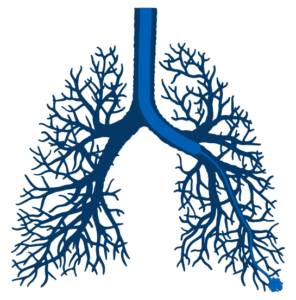Electromagnetic Navigation Bronchoscopy™ Procedures.
When you have a spot, or nodule, on your lung, it is important to learn as much as possible about it. Oneida Healthcare now has a minimally invasive option for finding out what your nodule is and what, if anything, needs to be done about it. Our Electromagnetic Navigation Bronchoscopy™ (ENB™) procedures provide a minimally invasive approach to accessing difficult to reach areas of the lung aiding in the diagnosis and management of lung disease.
What is a lung nodule?
A lung nodule is a spot in the lungs that can be seen with a chest X-ray or CAT scan. It is usually discovered not by symptoms a patient is experiencing, but during the course of conducting another test. More than half of all lung nodules are noncancerous (benign).1 Lung nodules have many causes, including old scars and infections, exposure to certain chemicals, and smoking. The only way to find out what type of nodule you have, and if any sort of treatment is necessary, is to take a tissue sample, or biopsy, and examine it under a microscope.
Are you a candidate for an ENB™ procedure?
An ENB™ procedure can be used with a broad range of patients, including those who suffer from poor lung function or have an increased risk of complications with invasive procedures. More than 50,000 patients have had the procedure, at over 600 leading medical facilities worldwide.

How does it work?
Using your CAT scan, the superDimension™ navigation system with LungGPST™ technology creates a roadmap of your lungs, like a GPS (Global Positioning System) does in a car. That roadmap guides your physician through the airways of your lungs to the nodule so that he or she is able to obtain tissue to diagnose, stage, and prepare to treat it all in one procedure.
How is it different?
 In a traditional bronchoscopy procedure a thin lighted tube (bronchoscope) is passed down the throat, but can only reach the central area of the lungs. With an ENB™ procedure, your physician is able to navigate to nodules even in the most distant areas of the lung in a minimally invasive way. Other biopsy options use more invasive techniques with higher risk of complications.
In a traditional bronchoscopy procedure a thin lighted tube (bronchoscope) is passed down the throat, but can only reach the central area of the lungs. With an ENB™ procedure, your physician is able to navigate to nodules even in the most distant areas of the lung in a minimally invasive way. Other biopsy options use more invasive techniques with higher risk of complications.
Compare invasive procedures vs. an ENB™ procedure.
More invasive procedures come with a greater risk of complications. Pneumothorax (collapsed lung) is the most common risk. Rates can be as high as 40% for procedures such as needle biopsies.2 Pneumothorax occurs in less than 3% of ENB™ procedure patients.3 Because it is a minimally invasive option that uses your natural airways, an ENB™ procedure has a lower risk of complications.
What can I expect during & after this procedure?
During the ENB™ procedure, you will be sedated and your physician will insert a bronchoscope through your mouth or nose and into your lungs. Once the tube is in place, your physician will insert specially designed tools to take a biopsy for testing. In some cases, small markers, about the size of a grain of rice, may be placed near the lung nodule to help guide a physician delivering follow up treatment or therapy. The procedure generally takes between 30 minutes to an hour.
After your procedure your samples will be sent to a laboratory for testing. Talk to your physician about when you’ll review results and discuss any next steps that might be recommended. For more information please call 315-361-2035.
Navigating Your ENB™ Procedure
- Your CAT scan is converted into a 3D roadmap
- Your physician uses this roadmap to guide a bronchoscope to the spot on your lung
- Your Physician will know the location of the bronchoscope in real time with the help of tracking sensors on your chest and a location board under your back.
- Without making an incision, your physician can take a sample of the lung nodule for testing. Small markers may also be placed near the lung nodule to help guide a surgeon or other physician, if follow-up treatment is necessary.
- The samples taken during ENB™ procedure will be evaluated and your physician will contact you with the results.
